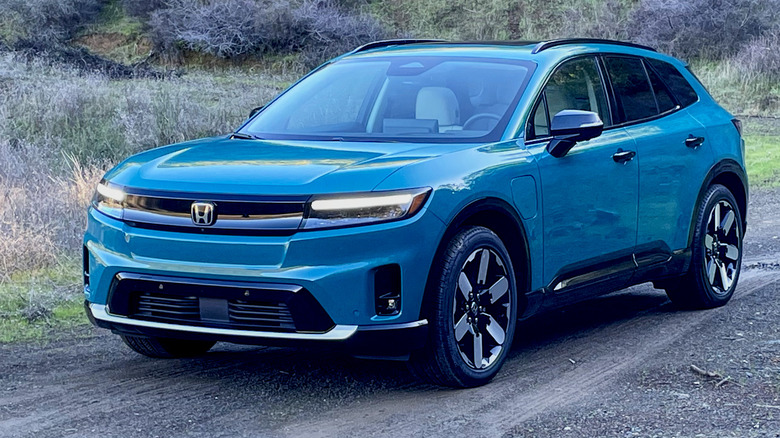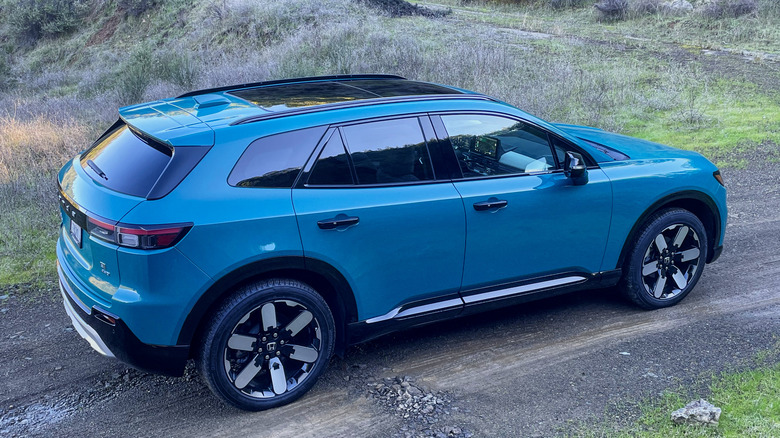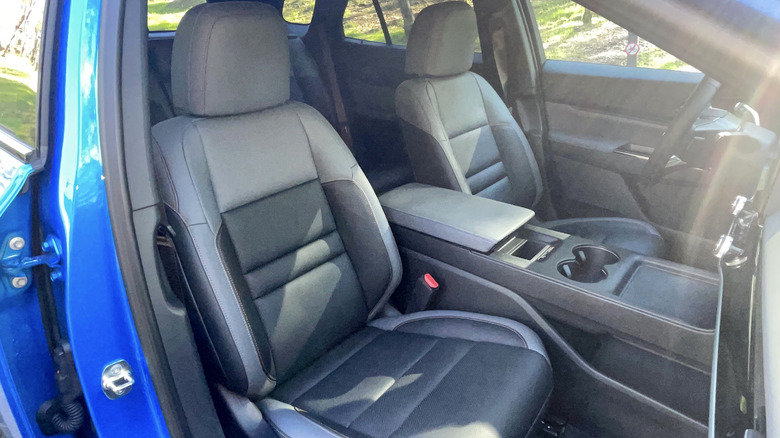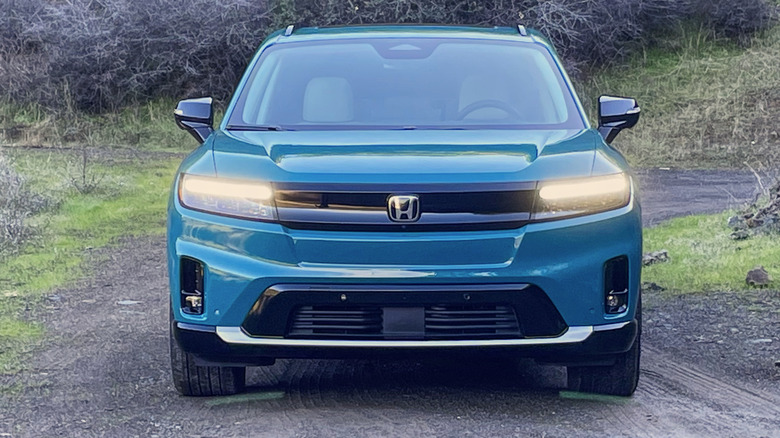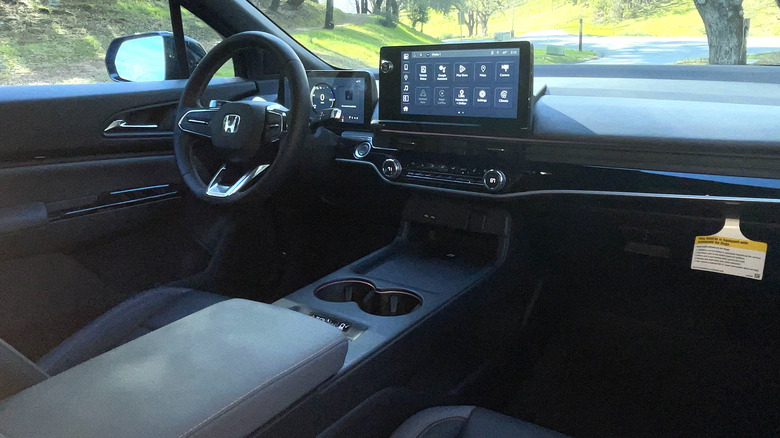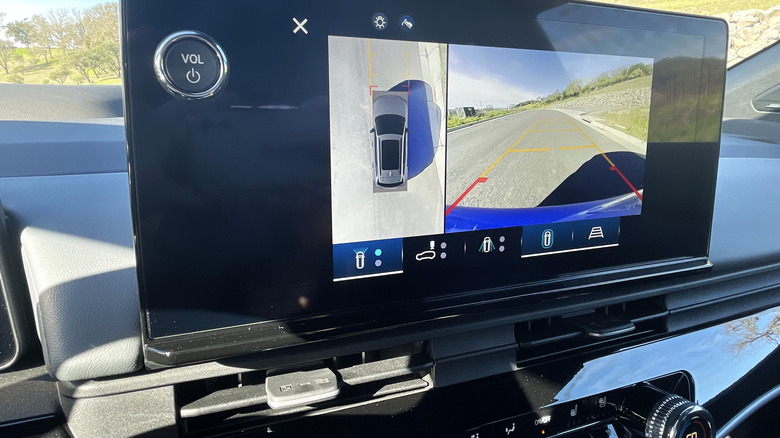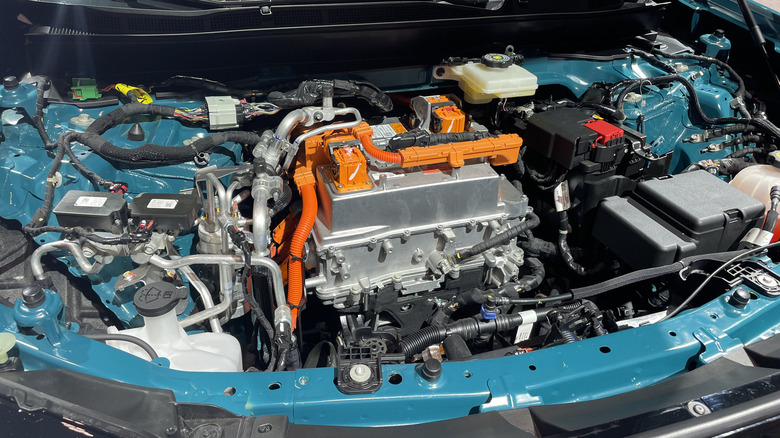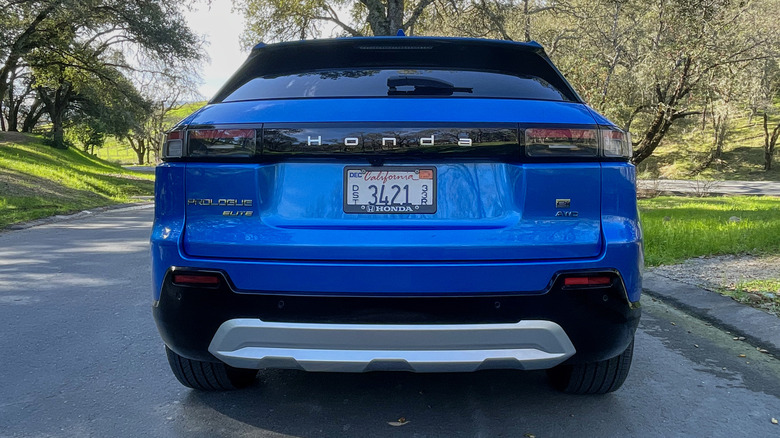2024 Honda Prologue First Drive: The Best Is Yet To Come
I'm probably overthinking things here, but if I was going to name a new vehicle, I wouldn't name it "Prologue." I do see situations in which the name would be appropriate and compelling — perhaps, for example, if it was the first to come of something truly new and innovative, the beginning of a curated collection of vehicles.
The all-new 2024 Honda Prologue actually is part of a curated collection of vehicles, but not exactly in the way Honda wants us to think of it. We'll get to that later. For the moment, we don't know terribly much about Honda's plans beyond the Prologue, or how Honda anticipates the Prologue will help shape the brand's future. A midwinter test drive in Sonoma Valley offered some clues, but left plenty of questions.
Is the Prologue — just one of many new fully electric SUVs on the market —properly packaged for shoppers? And is it really a fitting beginning for Honda's electric SUV story? Here's what we learned during our time with the Prologue.
Deus ex machina
Honda had a problem: how to go electric, cautiously and responsibility and while continuing to build vehicles people actually buy, and that's how we get to the Prologue's family ties. The Prologue is built on General Motors' Ultium platform, which the company has been heralding for the past several years as the basis for the EV revolution that's supposedly still gonna come someday. Honda vehicles are not GMs, but the Prologue is functionally, mechanically, a GM.
In other words, this is a situation most Honda SUV shoppers won't especially care about, but which lends a lot of insight as to why the Prologue is the way it is. Auto manufacturers do this sort of platform sharing all the time, sometimes quite successfully. In other cases, it might leave more observant shoppers wondering why the Honda Prologue doesn't look or feel anything like the Passport and Pilot across the showroom, and that's a hurdle before the salesperson even starts talking about the benefits of EVs.
Other vehicles on the Ultium platform include the Chevrolet Blazer EV, Chevrolet Silverado EV, Cadillac Lyriq, GMC Hummer EV, and the Acura ZDX, an upmarket version of the Honda Prologue. Of these, the Chevrolet Blazer EV and Honda Prologue are direct competitors, as are the Cadillac Lyriq and Acura ZDX. The Chevrolet and Cadillac aren't necessarily better just because they're built by their own company (and, in fact, recent reports suggest significant quality issues with early deliveries) but they feel more authentically like they're part of a cohesive plan.
Flashback
As I delve into Honda's future EV strategy, I'm reminded of the reimagined Prelude hybrid, which made its debut at the LA Auto Show in late 2023, and in that context, Prologue makes a lot more sense. Like the Prologue, the Prelude is a stepping stone — a co-developed project; a hybrid rather than a full EV — but they're still steps. Honda says the Prologue's nameplate "symbolizes [its] key role in Honda's electrification strategy" and even by the automaker's own admission, seems like it's a temporary thing.
Honda calls the "smart and agile strategy" of co-development a "unique development process." Is it? As we've already discussed, this happens all the time. If Honda needed a full EV that suits American tastes in showrooms as quickly as possible, sure, the "smart and agile" part of this is accurate. But also, by Honda's own admission, it's a stopgap. In the Prologue launch presentation provided to journalists, Honda also noted that the company has an aggressive strategy for battery-electric and fuel-cell EVs in the U.S. In February 2024, Honda broke ground on a new plant for next-generation EV batteries and vehicles, and in 2025, plans to introduce a "mid- to large EV... based on Honda's own EV architecture."
The Prologue is an OK SUV, and the issues it faces come from the compromises inherent in this co-development strategy.
Cover art
The Prologue's styling "advances Honda's global design direction" per the aforementioned presentation, though in reality it's a mixed bag, with some odd touches in the mix. The color palette is great in a '90s way (a good thing, if that's not clear) with North Shore Pearl teal and Pacific Blue Metallic cerulean making up most of the event's test fleet.
Honda proudly notes the available 21-inch wheels are the brand's largest factory wheels to date, which is interesting but still an odd choice for an EV. Bigger wheels look cool, but cannibalize range and contribute to a noisier ride; that's even more significant a compromise when there's no engine to cover up the drone on the pavement. Is the Prologue's target customer one who will be impressed by, or even notice, a 21-inch wheel compared to a much more practical and efficient 19- or 20-incher?
Finally, the Prologue can be dressed up with a line of official dealer accessories, some of which, like a chunky black grille, look fantastic.
Honda says the Prologue is very close in size to the Passport, with nearly identical length and width, but it rides lower with the intent of a sleeker and sportier look. During the test drive, my co-driver and I both noted that the windowsills felt really high, which both impaired outward vision and made the cockpit feel snug and wagon-like; a week later, at the Chicago Auto Show, friends echoed that the Prologue looked more like a wagon thanks to its high beltline and high, small rear window. Honda, if you're going for a throwback Crosstour thing, we encourage it. The Prologue also boasts under-floor cargo space in the hatch, while Touring models and above get a hands-free tailgate.
Structure
It's a similar story inside. Overall, the Prologue is comfortable, with supportive seats and standard reclining rear seats. The cockpit is trimmed in shades of greige, from a soft-ish material covering the wide center armrest through various hard panels and a textured headliner. The seat upholstery is of the best quality, as it should be. For contrast, there's plenty of it, and arguably too much. The steering wheel is covered in smooth black material, while the console, glovebox, and vents get textured or matte black plastic. There's an aggravating abundance of piano black trim. Matte silver glints along some edges of the dash, and the inner door handles get a shiny silver finish. Visually, it's a lot, like a pile of random jewelry on a table at a garage sale.
Instead of a console-mounted shifter or a rotary dial, like almost any car shopper would expect by this point, gears are found on a stalk behind the steering wheel, though Honda says this is to free up console space. Glance around in confusion — what decade are we in? — and you'll probably spot the cigarette lighter, which I haven't seen in a new vehicle in I don't know how long. The Sport Mode button is tucked away near where you might expect to find the charging port and liftgate release buttons.
The standard wireless charger is a nice touch, but kept giving messages that charging was unavailable. Keyless entry is standard across the lineup. Touring and Elite models also get a keycard for entry, like a hotel room, but need the key fob to start the car, so it's a marginal-at-best use case. The experience is, overall, finicky.
Hero's journey
The Prologue is available in two drivetrain configurations. The base single-motor front-wheel drive version is rated for 212 horsepower and 236 pound-feet of torque. I drove the dual-motor all-wheel-drive version with 288 horsepower and 333 pound-feet of torque that is available on the EX and Touring trims, and comes standard on the Elite trim (and which aligns with the base Chevy Blazer EV trims). It's only the dual-motor version that gets a Sport drive mode, which noticeably but not dramatically firms up the throttle, braking, and steering.
Honda has said that the Prologue was designed to feel more like driving a gas SUV than an EV, which rings true in some ways. The instant torque is apparent, yet the Prologue's takeoff doesn't have the weightless, effortless feel of other powerful EVs. It's smooth and easy at cruising speed, though not as quiet as most electric cars. The mushy brake feel recalls many gas SUVs, and though the Prologue does have regenerative braking settings, the menu was too complex to get a feel for the system during our drive.
Range checks in at an estimated 296 miles for single-motor models, 281 miles for dual-motor EX and Touring models, and 273 miles for the dual-motor Elite with the big wheels. Honda claims just 10 minutes of DC fast-charging can add up to 65 miles of range, but a lack of public chargers in our test area meant the focus was solely on driving.
While the platform and powertrains came from GM, Honda says the body panels along with the chassis and suspension tuning were worked over in-house. Honda also claims to have spent almost a year working on the Prologue's "custom-tuned active sound control," which will carry over to the brand's upcoming EVs. I'm not generally enchanted by fake car noises, but it is the way of the future. A few times, my co-driver and I noticed some out-of-place nature-like sounds, like passing a display of white-noise machines tucked on a bottom shelf at Bed Bath & Beyond, just another artificial touch in an artificial environment.
Villains
One of the key differences between the General Motors and Honda versions of this Ultium vehicle is in the infotainment technology and display. While the Chevy Blazer EV and Cadillac Lyriq get well-integrated screens that curve from the driver's side front pillar to about the center of the vehicle, giving a cohesive look to the instrument and infotainment displays, the Honda Prologue and Acura ZDX get a landscape-oriented tablet that protrudes from the dash, with a volume knob perched in the upper left corner. The knob is just a few inches from where the driver's hands are already at the steering wheel-mounted volume controls, but I couldn't easily reach it from the passenger seat. A minor complaint, but this would irritate me daily if I was trying to interact with my kid in the backseat while my husband drove.
The screens are crisp and clear, with configurable layouts, and the standard 11.3-inch infotainment display supports wireless Apple CarPlay and Android Auto. The full map view available on the driver display is a nice touch. It's the first Honda to get standard built-in Google technology, with detailed maps that can optimize navigation for the most efficient charging.
Under the hood, the Prologue is a puzzler. Unlike many competitors, there's no frunk, which Honda sort of skirted around at the press drive event. Every Prologue we've seen so far is a preproduction model, so this isn't entirely unheard of, but it wasn't until another journalist popped the hood at the Chicago Auto Show that we noticed the anomalies here. The bay looks like an engine bay; the electric motor looks like an engine. Even EVs with a "traditional" layout wear dressy covers and shrouds to complete the "futuristic" look and visually fill out that front crumple zone.
2024 Honda Prologue Verdict
The Prologue starts at $47,400 for the single-motor EX and $51,700 for the single-motor Touring; dual-motor versions cost $3,000 more. The loaded Elite, dual-motor only, starts at $57,900. These prices do not include the $1,395 destination charge.
To help ease the transition to EV life, the Prologue's MSRP includes the choice of a Level 2 home charging station with $500 installation credit and $100 EVgo network public charging credit, a Level 1/2 portable charger with $250 installation credit and $300 public charging credit, or $750 public charging credit. For charging convenience, Honda's mobile app integrates the EVgo, Electrify America, and Tesla Supercharger networks.
The Prologue does come standard with a load of safety technology, and it's Honda's first model to get rear cross-traffic braking, blind-zone steering assist, and rear pedestrian alert (the latter standard on the Elite trim). The great news here is that so much comes standard that there are only a couple of extra-cost features. Crash testing hasn't yet been completed.
In terms of attributes like standard range and connectivity features, the Honda Prologue beats competitors like the Tesla Model Y, Ford Mustang Mach-E, Hyundai Ioniq 6, and Kia EV6. We'd normally advise test-driving the Chevy Blazer EV as well, but that might be tough at the moment given its troubles. Honda anticipates the Prologue will qualify for the $7,500 federal tax credit, but it seems like EV prices change as often as gas prices these days, so shop carefully. The Prologue hits showrooms in spring of 2024.
If the Honda Prologue is truly forward-facing, it's mostly because, even by Honda's admission, there's plenty of room to grow beyond this step.
